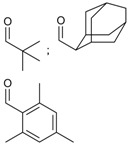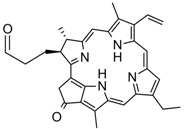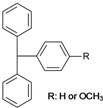Table 1.
Overview over cellulose derivatives, in ionic liquids (ILs).
| Entry | Substituent (Cell-OR) | DS a | ILs b | Comments c | Ref. |
|---|---|---|---|---|---|
| carbamates | |||||
| 1 |
 phenyl carbamate phenyl carbamate |
0.5–3.0 | BMIMCl | [36] | |
| 0.3–3.0 | BMIMCl | - derivatization of bacterial cellulose | [37] | ||
| 2 |
 3-(triethoxysilyl)propyl carbamete 3-(triethoxysilyl)propyl carbamete |
0.43, 2.95 | BMIMCl | - hydrolysis of ethoxysilyl groups directly after synthesis | [38] |
| carboxylic acid esters | |||||
| 3 |
 acetate acetate |
0.9–2.8 | AMIMCl | [39,40] | |
| 1.9–3.0 | BMIMCl, EMIMCl, BDMIMCl, ADMIMBr | [36,41] | |||
| 0.7–3.0 | BMIMCl | - derivatization of bacterial cellulose | [37] | ||
| 4 |
 propionate/butyrate/… and mixed esters propionate/butyrate/… and mixed esters |
≈0.5–2.9 | ABIMCl, BMIMAc, DOHMIMAc, HMIMAc, MOEMIMAc | - cellulose esters and mixed esters prepared- microwave irradiation (partly)- also pentanoates and hexanoates prepared | [42,43,44] |
| 1.4–2.7(DSoverall) | AMIMCl | - acetate-butyrates and acetate-propionates prepared- derivatization of cellulose from sugarcane bagasse | [45] | ||
| 0.5–2.9(DSoverall) | BMIMAc, BMIMCl, BMIMDMP, BMIMPr, EMIMAc, TBMADMP | - cellulose esters and mixed esters prepared- co-solvents applied (partly)- also mixed esters with benzoate prepared | [16,17,18,19,20] | ||
| 0.2–2.5 | BMIMCl, EMIMAc | - heterogeneous conversion with gaseous ketenes- acetates, propionates, and pentanoates prepared | [21] | ||
| 5 |
 benzoates benzoates |
1.0–3.0 | AMIMCl | [46] | |
| 6 |
 fuorate fuorate |
0.5–3.0 | BMIMCl | - activation of carboxylic acid with N,N’-carbonyldiimidazole (partly) | [47] |
| 7 |
 laurate laurate |
0.3–1.5 | BMIMCl | - phase separation with increasing DS | [36] |
| 8 |
 stearate stearate |
2.2–2.6 | BMIMCl | [48] | |
| 9 |
 pivalate, adamantate, trimethylbenzoate pivalate, adamantate, trimethylbenzoate |
0.9–1.4 | AMIMCl | - comparison with DMA/LiCl and DMSO/TBAF | [49] |
| 10 |
 succinate, phthalate succinate, phthalate |
0.2–2.5 | AMIMCl, BMIMCl | - derivatization of cellulose from sugarcane bagasse- catalysts applied - co-solvents utilized (partly) | [50,51,52,53] |
| 11 |
 glutarate glutarate |
0.3–1.2 | BMIMCl | - ultrasound irradiation | [54] |
| 12 |
 carboxylates containing amino groups carboxylates containing amino groups |
0.1-1.2 | BMIMCl | - tosyl chloride used to form reactive intermediates- co-solvents utilized | [55,56] |
| 13 |
 oxy-carboxylic acid esters oxy-carboxylic acid esters |
0.1–3.0 | AMIMCl, BMIMCl, EMIMCl | - activation of oxy-carbonic acid with N,N’-carbonyldiimidazole- derivatization of bacterial cellulose (partly) | [57] |
| 14 |
 2-halo carboxylate macro-initiators 2-halo carboxylate macro-initiators |
0.6–1.0 | AMIMCl | - co-solvents utilized- bromo compounds utilized | [58,59,60] |
| 0.3–1.9 | BMIMCl | - chloro compounds utilized | [61] | ||
| 15 |
 dehydroabiatate dehydroabiatate |
1.4–1.9 | BMIMBr | - catalyst applied | [62] |
| 16 |
 pyro-pheophorbide pyro-pheophorbide |
0.07 | AMIMCl | - activation of acid with N,N'-carbonyldiimidazole | [63] |
| ethers | |||||
| 17 |
 hydroxethyl/hydroxypropyl hydroxethyl/hydroxypropyl |
0.1–2.2 | BMIMCl, BDMIMCl, BDTAC, EMIMAc | - co-solvents utilized | [64,65] |
| 18 |
 trityl/methoxytrityl trityl/methoxytrityl |
0.8, 1.8 | AMIMCl | - pyridine utilized as base and co-solvent | [66] |
| 0.8–1.4 | BMIMCl | - pyridine utilized as base and co-solvent | [67] | ||
| 19 |
 carboxymethyl carboxymethyl |
0.49 | BMIMCl | - co-solvents utilized- heterogeneous (solid NaOH used as base)- gel-like system formed | [36] |
| n.a. | BMIMCl | - heterogeneous (solid NaOH used as base) | [68] | ||
| 20 |
 trimethylsilyl trimethylsilyl |
0.4–2.9 | BMIMCl, EMIMAc | - co-solvents utilized | [69] |
| 0.2–3.0 | BMIMCl, BMIMAc, BMIMBz, BMIMPr, EMIMAc, EMIMDEP | - heterogeneous derivatization (polar and non-polar liquid phase) | [70] | ||
| sulfuric/sulfonic acid esters | |||||
| 21 |
 sulfate sulfate |
0.1–1.5 | AMIMCl, BMIMCl, EMIMCl | - co-solvents utilized | [71,72] |
| 1.3–1.7 | BMIMCl | - co-solvents utilized | [73] | ||
| 22 |
 tosylate tosylate |
0.1–1.1 | AMIMCl, BMIMCl | - co-solvents utilized, reaction at 25 °C | [74] |
| 0.84 | AMIMCl | - reaction at 10 °C | [63] | ||
| deoxy cellulose derivatives | |||||
| 23 |
 chloro-deoxy chloro-deoxy |
0.8–1.l | BMIMCl | - co-solvent utilized- strong polymer degradation | [75] |
| grafts | |||||
| 24 |
 graft-poly(L-lactide) graft-poly(L-lactide) |
0.7–2.7(1.4–4.5) d | AMIMCl | - grafting by ring-opening of L-lactide- 4-dimethylamino pyridine applied as catalyst | [76] |
| 25 |
 graft-poly(acrylic acid) graft-poly(acrylic acid) |
n.a. | BMIMCl | - initiation by persulfate - microwave irradiation | [77] |
| 26 |
 graft-poly(N-isopropylacrylamide) graft-poly(N-isopropylacrylamide) |
n.a. | BMIMCl | - initiation by γ-ray irradiation | [78] |
| 27 |
 graft-poly(methyl methacrylate) graft-poly(methyl methacrylate) |
0.3–1.9 | BMIMCl | - derived from 14 by atom transfer radical polymerization | [61] |
a Range of degrees of substitution (DS), n.a.: no information available; b Cations: ABIM+: 1-allyl-3-butylimidazolium, ADMIM+: 1-allyl-2,3-dimethylimidazolium, AMIM+: 1-allyl-3-methylimidazolium, BDMIM+: 1-butyl-2,3-dimethylimidazolium, BMIM+: 1-butyl-3-methylimidazolium, BDMTA+: benzyldimethyltetradecylammonium, DOHMIM+: 1-(3,6-dioxa-(1-heptyl))-3-methylimidazolium, EDMIM+: 1-ethyl-2,3-dimethylimidazolium, EMIM+: 1-ethyl-3-methylimidazolium, EMPIP+: 1-ethyl-1-methylpiperidinium, HEMIM+: 1-hydroxyethyl-3-methylimidazolium, HMIM+: 1-hexyl-3-methylimidazolium, MOEMIM+: 1-(2-methoxyethyl)-3-methylimidazolium, TBMA+: tributylmethylammonium, TEMA+: triethtylmethylammonium, anions: Ac−: acetate, Br−: bromide, Bz−: benzoate, Cl−: chloride, DEP-:diethylposphate, DEP−: dimethylposphate, Fo−: formate, MPo−: methylphosphonate, Pr−: propionate; c Completely homogeneous conversion, if not noted otherwise; d Values in braces represent degree of polymerization of the grafted chain.
